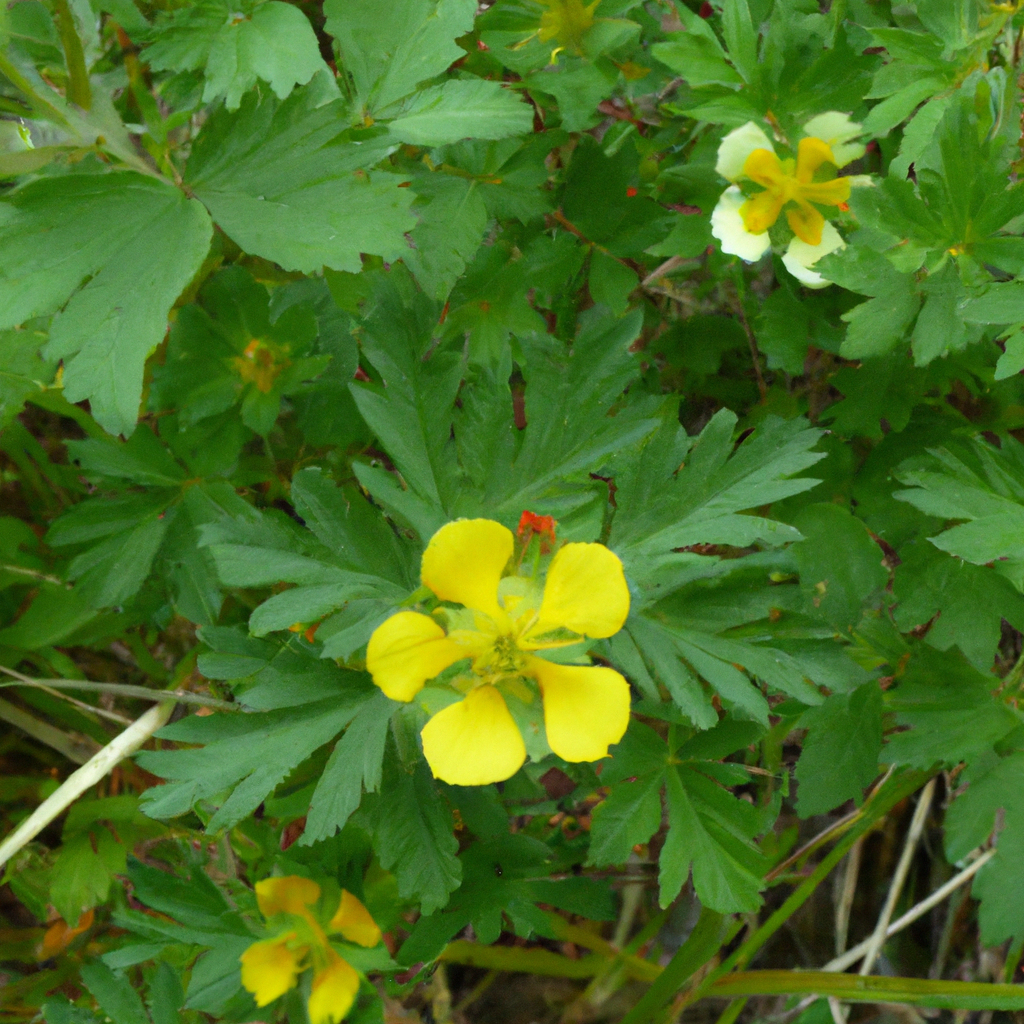Biological Name:
Potentilla spp. (Potentilla)
Natural Habitat:
Potentilla: This plant is native to Europe, Asia, and North America and grows in a variety of habitats, including fields, meadows, and along roadsides.
Description:
Potentilla is a type of flowering plant that is commonly found in fields and gardens. It is a member of the Rosaceae family, which also includes plants such as apples and roses. Potentilla is a perennial plant that produces hairy stems and clusters of small, yellow, pink, or white flowers. The plant is often used as an ornamental plant because of its attractive flowers and lush foliage. In some areas, potentilla is considered a weed because of its ability to invade cultivated areas and cause damage to crops and other plants.
Frequently Asked Questions (FAQs)
Q: Where is the best place to plant a Potentilla?
A: Full sun to partial shade. Plants will flower best with at least 6 hours of full sun. Some afternoon shade in warmer climates will help keep plants blooming longer and the flowers from fading.
Source
Q: Should you cut back Potentilla?
A: When to Prune Potentilla. The best time of year to prune Potentilla is spring before the leaves start to emerge. Cut back the top and old branches to encourage more full and dense growth. Shaping the plant in the spring will ensure the shrub looks good and has a rounded, consistent appearance.
Source
Q: What does Potentilla look like in winter?
A: In winter a low hedge of potentillas looks like a roll of tumbleweed. The tangle of brown stems is somewhat attractive in winter, poking up through and catching bits of snow; the look is definitely preferable to bare soil.
Source
Q: Do potentillas spread?
A: Potentilla fruticosa ‘Daydawn’ (Shrubby Cinquefoil) is a bushy deciduous shrub of spreading habit boasting masses of saucer-shaped, pink-flushed, cream to pale peach flowers from late spring to the first frosts. Resembling wild roses, the blossoms are so profuse that they literally smother the plant.
Source
Q: Are Potentilla plants invasive?
A: Sulfur cinquefoil (Potentilla recta), a class B perennial noxious weed in Lincoln County, Washington. A native of the Eastern Mediterranean, a member of the rose family, is a close relative to strawberries. However, because of its invasive nature, it is very undesirable economically and ecologically.
Source
Q: Can Potentilla be cut back hard?
A: To prune a Potentilla plant, you can remove any damaged shoots with loppers or saws, thin out any crowded shoots and mulch and feed the hedges after the pruning process has been completed. We would also recommend removing any of the previous year’s growth in shoots that have flowered to within 1.5-2.5cm (¾ inches).
Source
Q: What plants look good with Potentilla?
A: Companion Planting and Design Grow potentilla under windows along the foundation or mixed in a shrub or perennial flower border. The yellow flowered varieties look attractive planted next to blue flowered baptisia, salvia and catmint.
Source
Q: How many years do Potentilla live?
A: (Potentilla hickmanii) Hickman’s cinquefoil is a small herbaceous perennial that develops a woody taproot that can survive through years of unfavorable conditions. Some individuals have been estimated to live 25 to 30 years.
Source
Q: What can I plant next to Potentilla?
A: Companion Planting and Design Grow potentilla under windows along the foundation or mixed in a shrub or perennial flower border. The yellow flowered varieties look attractive planted next to blue flowered baptisia, salvia and catmint.
Source
Q: How do you prepare potentillas for winter?
A: The branches of the plant should be tied in towards the center, then a circle of hardware cloth can be placed around the outside. The base of the hardware cloth should be buried in the soil or mulch. This protection should be installed in late November and removed in mid April.
Source
Q: How big does a Potentilla get?
A: The shrub grows only 1 to 3 feet (31-91 cm.) tall, but what it lacks in size it makes up in ornamental impact. Gardeners in cold climates will find many uses for this hardy little shrub that thrives in climates as cold as USDA plant hardiness zone 2.
Source
Q: Does Potentilla flower all summer?
A: Potentilla come in all colours, with yellow, red, pink, white and orange among the most popular. Peak flowering is May to June, but blooms will continue all summer long.
Source
Q: Do Potentilla come back every year?
A: New shoots will emerge in spring. The older remaining stems will provide support for the thinner often floppy new growth. The result is greenery from ground to stem tip and a sturdier neater plant for you to enjoy.
Source
Q: Should you cut back Potentilla in the fall?
A: When to Prune Potentilla. The best time of year to prune Potentilla is spring before the leaves start to emerge. Cut back the top and old branches to encourage more full and dense growth. Shaping the plant in the spring will ensure the shrub looks good and has a rounded, consistent appearance.
Source
Q: Do you dead head Potentilla?
A: You don’t need to deadhead the flowers on your potentilla, as they’re able to take care of themselves. Because of their shrubby nature, potentillas lend themselves well to pruning to keep them in shape.
Source
Q: What can I plant next to Potentilla?
A: Companion Planting and Design Grow potentilla under windows along the foundation or mixed in a shrub or perennial flower border. The yellow flowered varieties look attractive planted next to blue flowered baptisia, salvia and catmint.
Source

